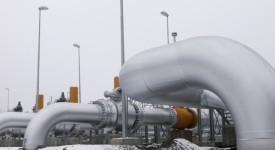A sharply falling euro has proven to be one piece of good news amidst all the bad ones – including stagnating prices and flagging consumer sentiment – for many European executives who are taking comfort in the dramatic devaluation of the common currency, from 1.36 to 1.18 dollars since July 2014. European manufacturers have cheered the falling value of the single currency for a simple reason: it makes their goods more competitive in global markets and thus allows them to export them more easily. But the mood is tempered by the fact that the Eurozone has finally entered deflation, which is particularly harmful to indebted countries because it makes servicing the debt more expensive. The threat of deflation is also increasingly a nightmare for the ECB, which may launch the policy of Quantitative Easing – also known as QE, which essentially refers to buying up sovereign debt – as early as from 22 January.
Welcoming the sharp fall in euro’s value at a recent press conference of rocket manufacturers (6 January), CEO of Arianespace, Stéphane Israël, stated: “Bravo to Mario Draghi, bravo to the European Central Bank, because this monetary policy allows us to compete on an equal footing”. And while At the ECB may well be headed toward an outright QE policy, across the Atlantic, the Fed is expected to make an opposite move by increasing interest rates sometime later this year. These diverging monetary policies will likely lead to the euro sinking further relative to the dollar, which is already at its lowest point in nine years. The devaluation of the euro has clearly been one of the ECB’s key objectives, which is not easy to achieve in the absence of growth and inflation. The governors of the Central Bank will discuss their options for an outright QE at their meeting on 22 January. While the practice of buying and cancellation of sovereign debt has been widely used in the U.S. and Japan since the crisis, it has never before in Europe, where it is increasingly seen as a necessary measure to tackle the threat of deflation.







